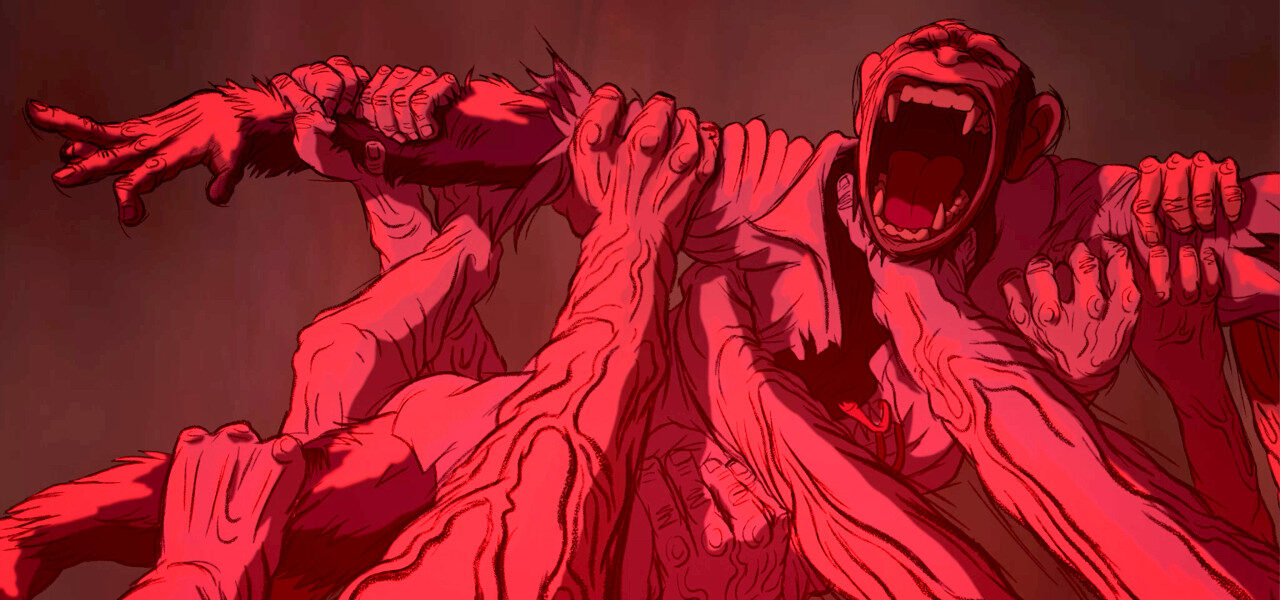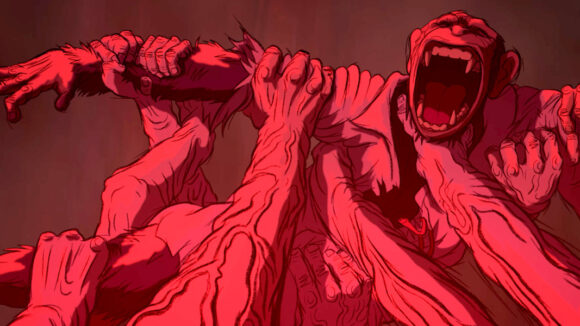

Spanish Oscar Hopeful ‘The Monkey’: A Timeless And True Story Of Hatred Used To Manipulate The Masses
Oscar-qualified Spanish animated short The Monkey features an intriguing mix of cultural and historical touchstones from Spain and the U.K. while touching on the timeless theme of hatred used as a tool of control.
The film combines a variety of concepts: a popular legend from a small English village – The Monkey of Hartlepool; the historical episode of the Invincible Armada and Spain’s attempted invasion of England in the 16th century; and a modern approach by writer-director Xosé Zapata focusing on politics and “fake news” to manipulate feelings and ignite hatred in people. This amalgamation of ideas makes The Monkey a particularly intriguing proposal. In fact, the film so impressed its domestic Spanish audience that it won the Spanish Academy Goya award for best animated short in 2022.

The Monkey was made with the structure and ambitions of a “mini-feature.” Noteworthy performances by popular Irish actor Colm Meaney (Star Trek Deep Space Nine, Layer Cake) and Spanish actor-filmmaker Alex Brendemühl (Rumbo a peor, The Prayer) highlight a screenplay that utilizes sharp dialogue and narrative timing to construct a full and rewarding story arc with a final payoff that justifies the viewer’s emotional investment.
The classic style of the film’s visual design, a tribute to the 2d animation of the 1970s and 1980s, gives this short film a distinct personality within a panorama dominated by conceptual narratives and minimalist designs.
The Monkey is the result of the collaboration between two of the most prestigious studios in Southern Europe. Lisbon’s Sardinha em Lata (run by Nuno Beato – director of the Annecy competitor and Goya-nominated feature My Grandfather’s Demons) co-produced the short with Madrid-based Lightbox Animation Studio, producers of the popular Spanish animated film franchise Tadeo Jones.
Zapata not only wrote the screenplay but co-directed the short with Italian animator and illustrator Lorenzo Degl’Innocenti, who works out of Lisbon. The two directors spent four years working on The Monkey, and were so happy with the partnership that they are already underway on their next collaboration, the short film Mr. Fischer’s Chair, which is being developed as a possible trailer for a future feature.

According to Zapata, the most outstanding aspect of the development of The Monkey was the extensive historical research that went into its designs and locations. The majority of the film takes place on a beach in northern Ireland, amongst the ruins of a real 16th-century shipwreck near the city of Derry. There, the wrecking of the Spanish galleon La Girona left more than a thousand dead in 1588. La Girona is the ship that appears at the beginning of the short film.



Characters, costumes, and scenery each received careful and extensive historical concern to best fit the personalities and psychology of the people represented in the film, like the wealthy and powerful local baron MacDonell (Meaney) and his soft-spoken, sensitive counter part Denton (Brendemühl). The characters represent two ways of looking at the world and are stand-ins for two common political archetypes: the idealist and the pragmatist.



The Monkey also plays with the dual representations of an entirely innocent character, La Girona’s “powder monkey.” Powder monkeys were children who traveled and worked on warships. Their job was to handle gunpowder, which stained their faces and lead to the nickname. Monkey or human, ultimately the story is always the same: we are often only pieces of a destiny decided by politics and the economic interests of a few.
These elements combine to make The Monkey unique among animated shorts, not only for its political message and social denunciation against racism and war but also because of the mosaic of human social behavior that its constructs, which can apply to any time in human history.
The Monkey, with its narrative and technical acumen, reaffirms the strong state of the animation industry in Spain. In fact, just this year Alberto Mielgo and Leo Sanchez won the Oscar for best animated short with their film The Windshield Wiper. In feature animation, Spanish standouts include the award-winning feature Buñuel in the Labyrinth of the Turtles and ambitious international co-productions such as Dragonkeeper, the first feature animation collaboration between China and Spain. Both of those films are directed by Salvador Simó.
Creators including Raul Garcia (Extraordinary Tales), Sergio Pablos (Klaus), Rodrigo Blas (Trollhunters: Tales of Arcadia), Sergio Jiménez (Love, Death + Robots producer), Carlos Zaragoza-Aurora Jiménez (production designer on VIVO), and the Trueba-Mariscal duo (Chico y Rita) have all made films in Spain that have had a significant global impact. Now, The Monkey’s Zapata and Degl’Innocenti have joined them.

The Monkey, a Spain-Portugal co-production, demonstrates that a well-told story and a timeless theme can move audiences around the world and achieve great recognition. The key, according to Zapata and Degl’Innocenti, is always the story.
